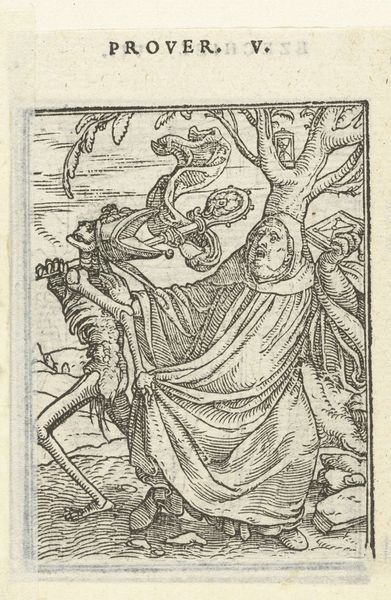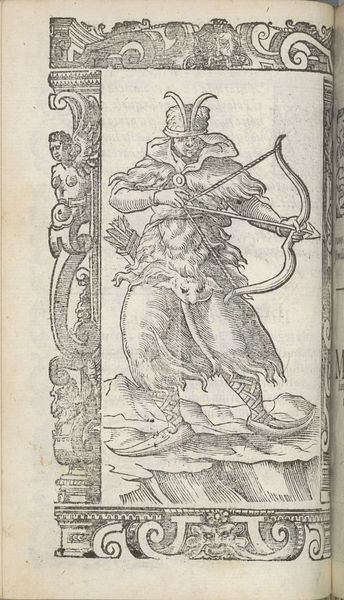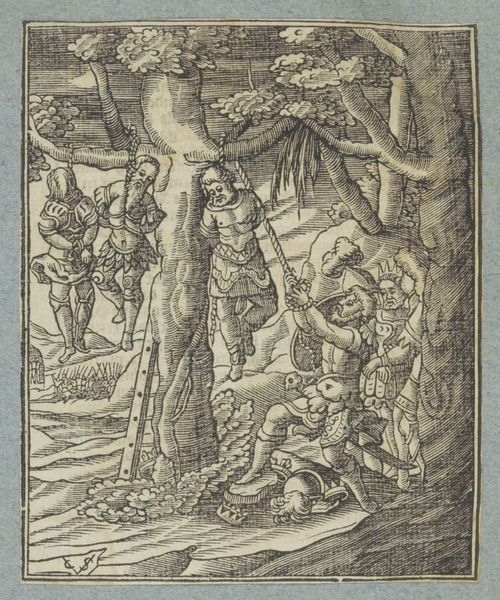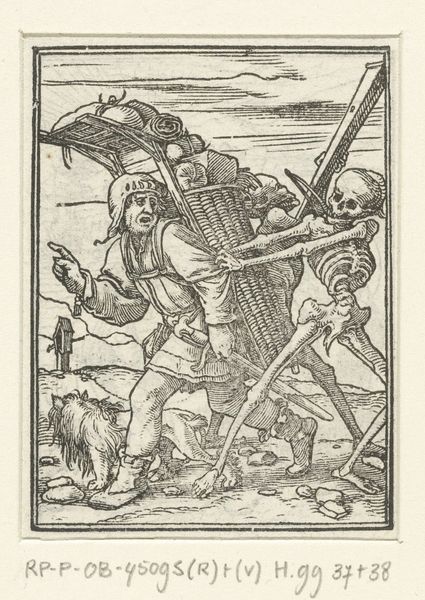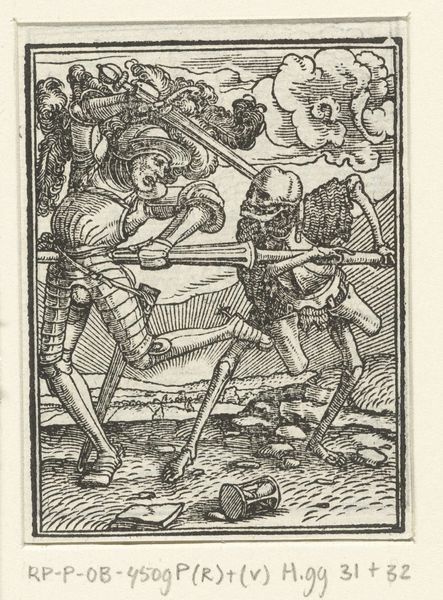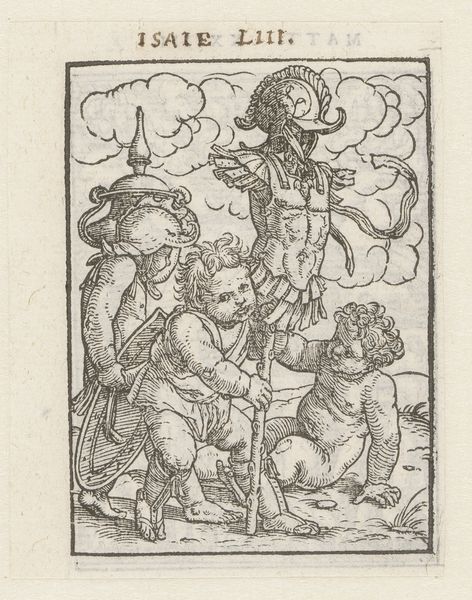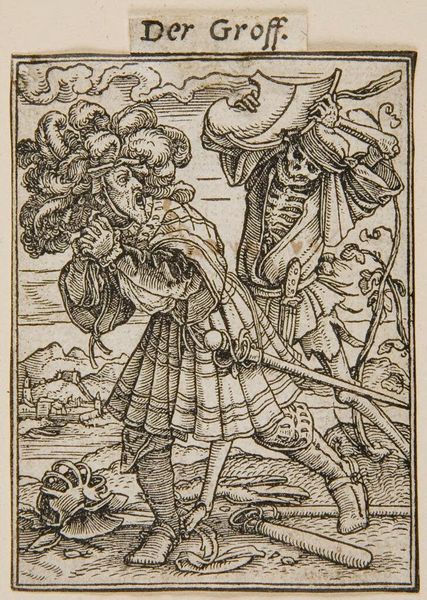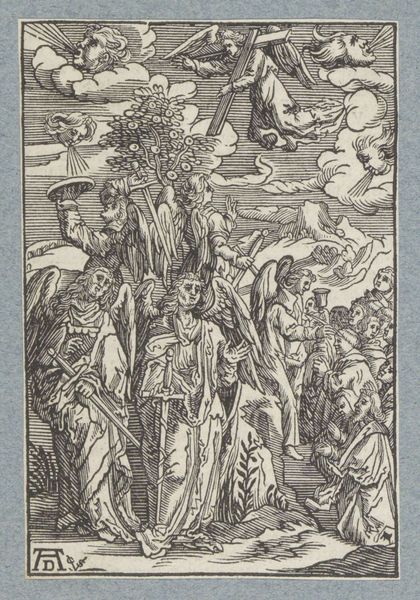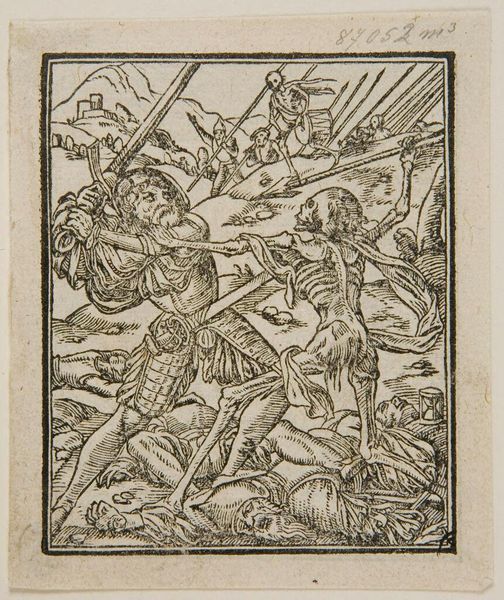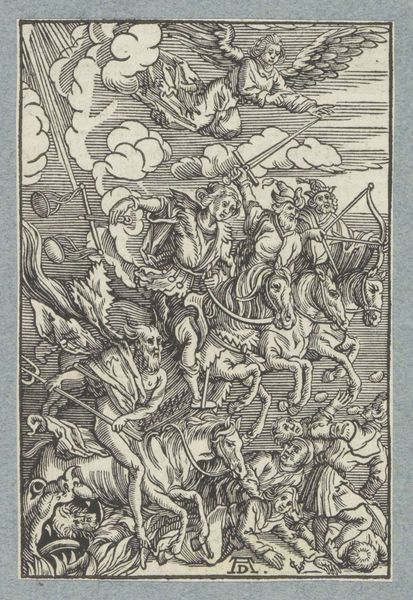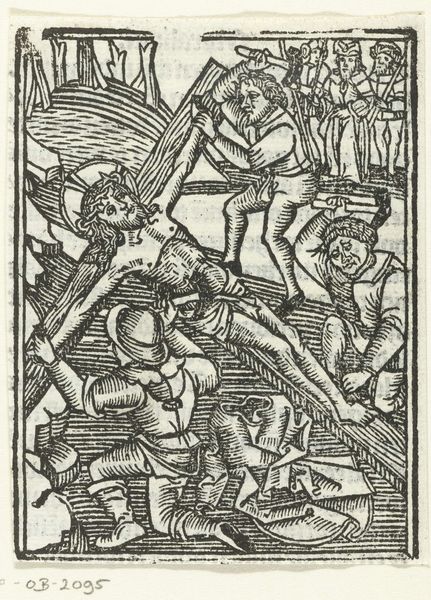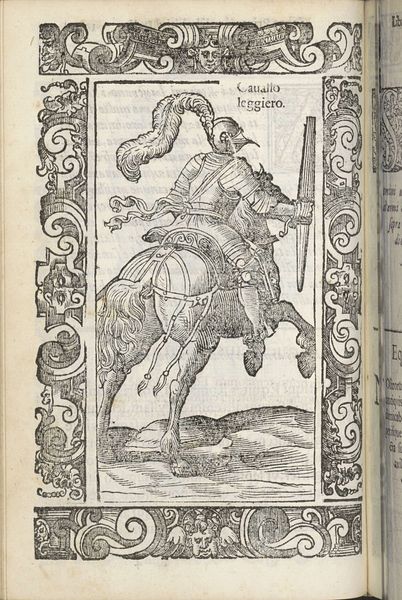
print, woodcut, engraving
#
allegory
# print
#
figuration
#
woodcut
#
line
#
history-painting
#
northern-renaissance
#
engraving
Dimensions: height 65 mm, width 50 mm
Copyright: Rijks Museum: Open Domain
Hans Holbein the Younger made this woodcut, "The Count and Death," in the 1520s, as part of his famous "Dance of Death" series. Holbein was a German artist working during the Reformation, a period of immense social and religious upheaval. Through stark visual allegories, these prints confronted viewers with the omnipresence of death, regardless of social status. Here, a richly dressed count is confronted by a grinning skeleton, a reminder that earthly power and wealth offer no escape from mortality. The "Dance of Death" series was not merely a morbid reflection; it was a commentary on the social structures of the time. The Reformation challenged the authority of the Church, and Holbein's art questioned the value systems of a society obsessed with wealth and power. Understanding Holbein's work requires us to delve into the social and religious history of 16th-century Europe, exploring theological debates, economic shifts, and the changing role of art in society. The meaning of art is always contingent on its context, and historical research can illuminate the powerful messages embedded within it.
Comments
No comments
Be the first to comment and join the conversation on the ultimate creative platform.
